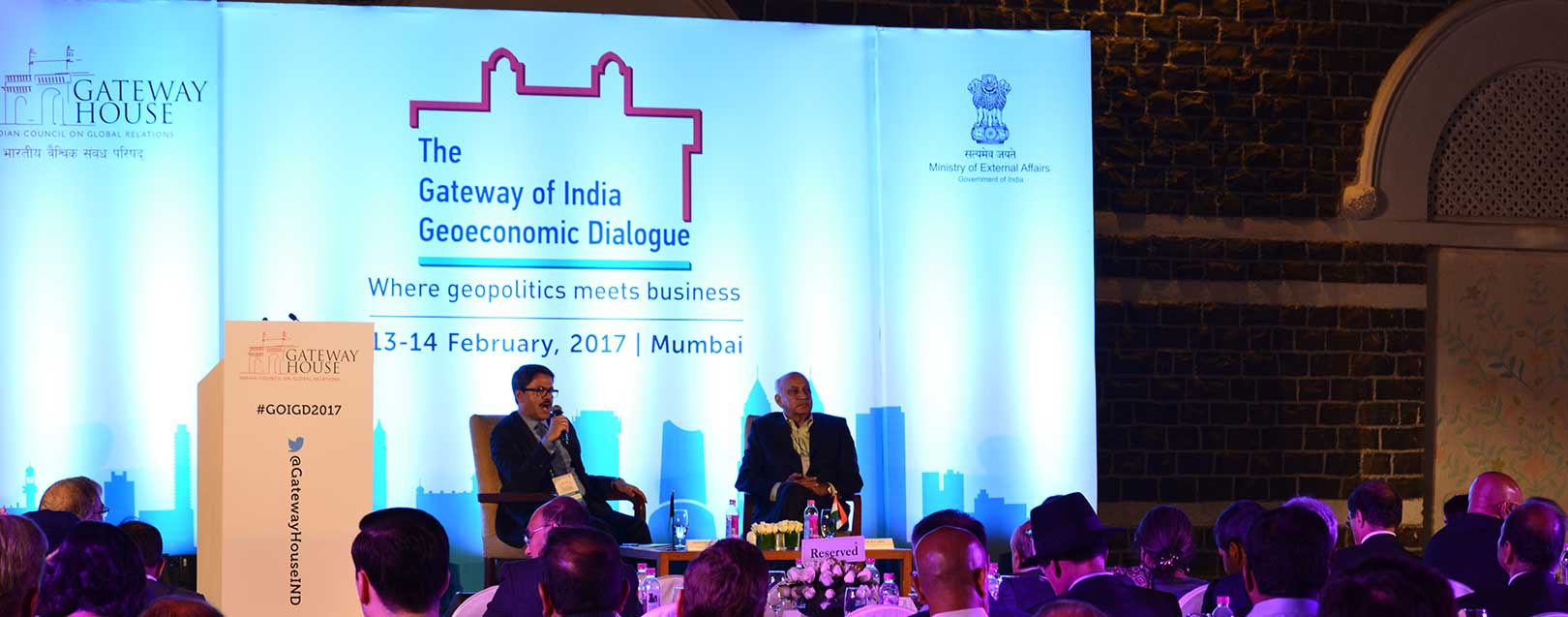
"With political and economic uncertainties in the world, India and Bangladesh are the best options", State Min-Foreign Affairs Bangladesh
Sairaj Iyer
Two important economies of South-East Asia - Bangladesh and India’s growth in the past decade provide ample evidence that they are the face of development in a dull-trade-market mired with terrorism, negative growth, and political & economic uncertainty. “With political and economic uncertainties (in the world) India and Bangladesh are the best options,” Md. Shahriar Alam, State Minister- Foreign Affairs, Government of Bangladesh said at the inaugural dialogue of the Second Gateway of India Geoeconomic Dialogue in Mumbai.
The minister’s tete-a-tete, with MJ Akbar, Minister of State for External Affairs, Government of India, showed the bonhomie the two countries shared by benefitting mutually from their partnership and free trade.
Despite uncertainties, the South East Asian markets are maintaining a steady growth. According to PwC report, India would be the world’s third-largest economy while Bangladesh would be 29th largest in terms of PPP (Purchasing power Parity) by 2040. Better PPP translates to a relative cost of living and a cumulative easing of inflation rates, which could increase the growing number of unexplored-partnerships between the two countries, ultimately benefitting trade.
India in a post-demonetized and yet-to-commence GST era has been a hopeful venue of development. Demonetization may have ebbed markets in the wrong way, but the forecast of a better GDP rate for the second quarter and beyond are factors that point towards a sound domestic market and overall economic stability. Bangladesh, on the other hand, has witnessed growth like none other.
The average GDP growth for Bangladesh in the last 8 years has been above 6, while this year the country recorded a growth of 7. “We are targeting 7.5% this year. We have earned $34 bn through FDI from export earnings, a growth of 12%. By 2020, we are trying to grow annual exports to $55 bn through a basket of export items such as- ICT services,” said Shahriar Alam.
Bangladesh has already declared that it would bring about 100 new special economic zones, spread across two major locations- one in a major port and the other bordering India. 74 new locations have been chosen for the project, a development that has come post-India’s extensive $102 bn line-of-credit as a long term support. “We will have to invest nearly $20 bn annually to improve the GDP by 5%. Bangladesh and India are enjoying the best relationship, and we are getting long term support for key infra projects to improve connectivity. This is the time when the business community should take advantage of a steady income, competitive labour costs and huge internal markets,” he averred.
The minister additionally highlighted during the interaction at the Indian Merchants Chamber that two SEZs in the North-west of Bangladesh bordering India are dedicated to Indian businesses. The presence of the Indian private sector in Bangladesh is steadily growing and in recent years Reliance has been actively involved in the LNG sector, while Adani is setting up a coal-based power plant, Tata Motors is expanding its manufacturing operations and Godrej already has its presence in Bangladesh.
“Another important area for India-Bangladesh cooperation is in the area of Blue Economy where spatial planning integrates conservation, sustainable use of living resources, oil and mineral wealth extraction, bio-prospecting, sustainable energy production and marine transport. India and Bangladesh have also signed an MOU on coastal shipping. There is a great potential for cooperation in the fishing sector too,” he added.
Speaking about a shift in world structure, MJ. Akbar said since 1919 that there has been a shift in the world structure. 1919 was the year of the collapse of empires, 1947 resulted in the end of colonialism, and 89-90 was the period when the Soviet Union crumbled. According to him, nationalism and protectionism have resulted in a closure of economic free-trade concepts. He cited his discussions and experiences at the World Economic Forum in Davos to explain the shift.
“One of the greater problems we are facing is the emergence of supra-nationalism in the control of multi-national corporations, and in the control of liberals actually who have decided that multilateralism must take precedence over nationalism. The force that would challenge both radicalism and reshape economies is nationalism. It is certainly not xenophobia, but has very powerful and positive aspects,” he said.
Before concluding he mentioned the rising need for policy-makers and governments in involving the younger generation and credited PM Modi’s digital initiatives as improving the quality of life and uplifting the society. “We need to be the powerhouse India was and India will become,” he added.
India under Prime Minister Modi’s leadership has taken a new approach in its Look-East thought-process. The 21st-century Silk-route extending through Bangladesh, India, Myanmar and China (BIMC) remained elusive for almost 14 years, before the ‘Look East’ policy reignited a discussion. The BIMC route brings together the exclusive benefits of the intra-ASEAN FTAs into one. The topic makes for a compelling discussion along with others such as visa-free movement, Chinese influence and labour challenges when Sheikh Hasina, the Bangladesh PM visits India.
*With additional inputs from Press Release at IMC.






 to success.
to success.